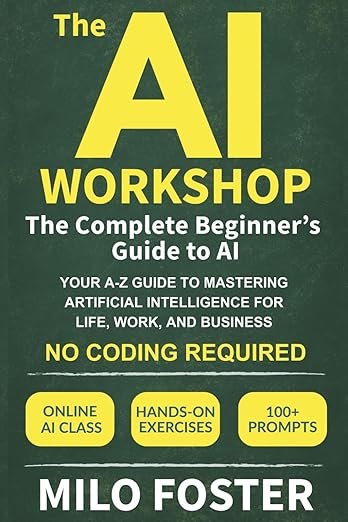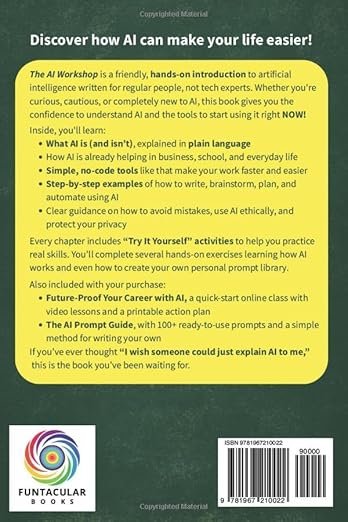
AI Guide Stratégies
AI Guide Stratégies has emerged as a transformative force in the contemporary business landscape, influencing a wide range of sectors from healthcare to finance. At its core, AI refers to the development of computer systems capable of performing tasks that typically require human intelligence. These tasks include learning, reasoning, problem-solving, perception, and language understanding. As technology has advanced, the capabilities of AI systems have grown, enabling businesses to harness their full potential to drive innovation and efficiency.
The significance of AI Guide in business cannot be overstated. Organizations are increasingly recognizing the value of integrating AI solutions into their operations to streamline processes, enhance decision-making, and improve customer experiences. For instance, AI-driven analytical tools can process and interpret vast amounts of data at unprecedented speeds, empowering companies to make informed decisions backed by insights derived from real-time data analysis. Moreover, AI can automate routine tasks, freeing up human resources for higher-level functions that require critical thinking and creativity.
As businesses seek to differentiate themselves in a competitive market, the implementation of AI presents a significant opportunity for growth and improvement. From predictive analytics that forecast consumer behavior to chatbots that provide real-time customer support, AI technologies can enhance both the efficiency of internal operations and the quality of services offered to clients. Furthermore, the adaptability of AI solutions allows businesses to tailor applications to their specific needs, ensuring that they remain agile and responsive to changes in the marketplace.
AI Guide In this blog post, we will explore various aspects of AI in business, shedding light on its capabilities and potential applications. Through understanding the fundamental principles of AI and its implications for various industries, businesses can make informed decisions about how to integrate these innovative technologies into their strategies and operations.
Understanding the Basics of AI
Artificial intelligence (AI) is transforming various industries, providing businesses with innovative solutions to complex challenges. At its core, AI refers to the capability of a machine to imitate intelligent human behavior. This technology encompasses several fields, including machine learning, natural language processing (NLP), and data analytics, each playing a vital role in enhancing business operations.
Machine learning, a subset of AI, involves training algorithms to recognize patterns within large datasets. Through this process, machines can improve their performance over time based on the data they process. This approach allows businesses to make data-driven decisions, leading to increased efficiency and productivity. Conversely, NLP allows machines to understand and interpret human language, enabling them to facilitate communication between humans and computers. This capability is particularly useful in customer service applications, where chatbots and virtual assistants can interact seamlessly with customers.

Data analytics can be seen as the backbone of AI systems. Businesses generate vast amounts of data daily, and effectively harnessing this information is crucial for successful AI implementation. By analyzing data, organizations can uncover insights that inform strategic decisions and enhance customer experiences. Importantly, differentiating between the various types of AI is essential for businesses. Narrow AI, which focuses on specific tasks, contrasts with general AI, which aims to perform any intellectual task that a human can do. Understanding these distinctions helps organizations determine the most appropriate AI applications for their needs.
The continual evolution of AI technologies has significant implications for businesses. By integrating AI solutions, organizations can remain competitive, streamline processes, and ultimately achieve better outcomes. The foundational knowledge of AI’s types and applications sets the stage for exploring more advanced concepts and practical implementations in subsequent sections.
Identifying Opportunities for AI in Your Business
To effectively implement artificial intelligence (AI) in your business, it is crucial to identify specific opportunities where AI solutions can provide significant benefits. The first step in this process involves analyzing your existing business operations to highlight areas that may profit from automation, predictive analytics, or enhanced decision-making capabilities.
A useful approach is to conduct a thorough evaluation of your workflows. Consider processes that are repetitive, time-consuming, or prone to human error. For instance, in customer service, deploying AI-powered chatbots can streamline responses, thereby improving customer satisfaction while freeing up human resources for complex inquiries. Similarly, in marketing, AI can analyze data to identify patterns, allowing businesses to target potential customers more effectively.
Another critical aspect to consider is the volume of data that your business generates. Companies with substantial data assets can leverage AI for predictive analytics. For example, a retail business can utilize AI algorithms to forecast inventory needs based on consumer trends, ensuring that stock levels are optimized and unnecessary costs are minimized. By employing machine learning techniques, firms can turn data into actionable insights, paving the way for strategic planning and resource allocation.
Moreover, consider the specific challenges your organization faces. Are there bottlenecks in production or supply chain management? AI solutions can analyze logistics and production schedules to help streamline operations. By integrating real-time decision support systems, businesses can become more agile in responding to market changes and demands.
In summary, identifying opportunities for AI implementation in your business requires a careful assessment of your existing processes, data utilization, and operational challenges. By focusing on areas that can benefit from automation and data analysis, you are positioned to enhance efficiency and drive growth through the strategic deployment of AI technologies.
Considerations for Implementing AI Solutions
The integration of Artificial Intelligence (AI) solutions into business operations necessitates a thoughtful evaluation of several critical factors. Primarily, budget constraints must be assessed to ensure that the financial commitment aligns with the organization’s overall strategy and available resources. Implementing AI technologies can entail significant upfront investment, including costs associated with software, hardware, and staff training. A preliminary budget analysis should consider both immediate and long-term expenses to avoid unexpected financial burdens.
Resource availability is another essential factor in the successful implementation of AI. Organizations need to evaluate their current technological infrastructure and personnel capabilities to determine if they possess the necessary tools and skills to support AI initiatives. For instance, having a team that is proficient in data science, machine learning, and programming languages is critical for fostering a seamless integration. In cases where in-house expertise is insufficient, businesses may need to explore partnerships with external vendors or invest in training programs to upskill existing staff.
Organizational readiness for change plays a pivotal role in AI adoption. Companies must cultivate a culture that encourages innovation and adaptability to embrace new technologies fully. This may involve addressing resistance from employees who may fear job displacement or require reassurances about how AI will enhance their roles rather than replace them. Furthermore, aligning AI initiatives with the overall business strategy is crucial to ensure that they contribute positively to the organization’s objectives and lead to improved operational efficiency.
Potential challenges, such as data privacy concerns and adherence to legal regulations, should also be meticulously evaluated. Organizations must establish clear guidelines to address ethical considerations and ensure compliance with applicable laws when utilizing AI solutions. By taking these factors into account, businesses can proactively mitigate risks and enhance the likelihood of a successful AI implementation.
Selecting the Right AI Tools and Technologies
In the rapidly evolving landscape of artificial intelligence (AI), choosing the right tools and technologies is critical for businesses looking to harness the power of AI effectively. The market offers a plethora of AI solutions, including software, platforms, and programming languages, each designed to fulfill specific needs. It is essential to assess these options based on the distinct requirements of your business.
One of the first considerations in the selection process is to determine the specific AI applications that will benefit your operations. For instance, if your objective is to enhance customer service, AI-powered chatbots and virtual assistants might be suitable. Conversely, for data analysis and insights, machine learning platforms may be more appropriate. By identifying your business goals, you can narrow down the tools that align with your strategic objectives.
Moreover, scalability is a vital factor. As your business grows, the AI tools you choose should be capable of managing increased data volumes and more complex operations. Opting for cloud-based solutions can provide the flexibility and scalability needed to grow with your business demands.
Another crucial aspect is the ease of integration with existing systems. Businesses often use multiple platforms, and it is important that your selected AI technologies can smoothly integrate with these tools to ensure a seamless workflow. Conducting a compatibility assessment before making any decisions can prevent future technical challenges.
Lastly, consider the programming languages and frameworks associated with the AI tools of interest. Familiarity within your team regarding specific languages such as Python or R can greatly influence the ease of implementation. Ensuring your team possesses the necessary skills can expedite the deployment and optimize the effectiveness of the AI solutions.
Creating an AI Implementation Roadmap
Implementing artificial intelligence (AI) in business requires a structured approach to ensure successful integration into existing processes. A comprehensive AI implementation roadmap serves as a strategic guide that outlines the necessary steps for planning, executing, monitoring, and refining AI initiatives. The first step in developing this roadmap is to assess the current state of the organization, including an evaluation of existing data, technology infrastructure, and employee readiness for AI adoption. This assessment will identify potential opportunities for AI application within different business functions.
Once the assessment is complete, the next phase involves defining clear objectives and goals for the AI initiatives. These objectives should be aligned with the overall business strategy and must be realistic and measurable. This might include improving operational efficiency, enhancing customer experience, or generating insights through data analytics. Establishing these goals is crucial as they will provide direction and serve as a foundation for evaluating the success of the AI implementation.
Next, it is important to establish a project timeline that outlines key milestones and deliverables. This timeline should be flexible enough to accommodate unforeseen challenges, while ensuring that the project remains on track. Engaging stakeholders throughout the process is essential; ongoing communication will facilitate collaboration and buy-in from various departments, enhancing the likelihood of successful integration.
Once the AI solution is implemented, continuous monitoring and evaluation of performance metrics are required to assess the effectiveness of the initiative. Regular reviews will enable the organization to identify areas for improvement and make necessary adjustments. By creating a structured AI implementation roadmap, organizations can navigate the complexities of AI adoption, ensuring that the integration is not only successful but also sustainable in the long term.
Training and Upskilling Your Team
As businesses increasingly integrate artificial intelligence (AI) into their operations, the need for adequately trained employees becomes paramount. Effective implementation of AI technologies requires team members who possess not only the necessary technical skills but also analytical abilities that allow them to leverage AI tools effectively. Hence, investing in training programs and upskilling initiatives is essential for any organization aiming to harness the full potential of AI.
One effective approach is to identify the specific skills that employees need to develop. This may include proficiency in programming languages such as Python or R, understanding machine learning principles, or becoming familiar with AI frameworks and tools like TensorFlow or PyTorch. Various online platforms offer access to courses that cover these topics extensively. Websites such as Coursera, edX, and Udacity feature programs taught by industry experts, allowing your workforce to learn at their own pace while gaining essential certifications.
Additionally, practical workshops can provide hands-on experience, enabling employees to engage directly with AI technologies. Collaborating with industry professionals to conduct on-site training sessions can further enhance this experience. Bringing in experts not only enriches the learning process but also helps in addressing real-world challenges that the team may encounter when working with AI deployments.
Moreover, fostering a culture of continuous learning is critical in the rapidly evolving field of AI. Organizations should encourage employees to seek out learning opportunities and share knowledge within teams. By doing so, companies can ensure that their workforce remains knowledgeable about current developments in AI and can adapt to upcoming trends.
In summary, focusing on training and upskilling your team is a vital step toward optimizing AI integration in your business. By providing appropriate resources, engaging training programs, and promoting a mindset of lifelong learning, organizations can equip their employees to work effectively with AI technologies and drive innovation forward.
Case Studies: Success Stories of AI in Business
Artificial Intelligence (AI) has reshaped various industries, paving the way for efficiency, innovation, and enhanced customer experiences. To understand the efficacy and potential of AI in business, examining real-world case studies can provide valuable insights. One notable example is the retail giant Walmart, which leverages AI for inventory management and predictive analytics. By utilizing machine learning algorithms, Walmart optimizes stock levels, tracks customer preferences, and forecasts demand. This initiative has not only reduced operational costs but also significantly enhanced customer satisfaction by ensuring product availability.
Another exemplary case can be observed in the healthcare sector, where IBM’s Watson has made substantial contributions. Watson utilizes natural language processing and machine learning to analyze vast amounts of medical data. It assists healthcare professionals in diagnosing conditions more swiftly and accurately. For instance, in oncology, Watson’s ability to sift through thousands of published studies enables practitioners to tailor treatments to individual patients effectively. The integration of AI in healthcare leads to improved patient outcomes and operational efficiencies.
In the financial industry, Bank of America has successfully integrated AI through its virtual assistant, Erica. This AI-driven chatbot facilitates customers with account inquiries, transaction history, and financial advice. The implementation has resulted in enhanced user engagement and operational cost savings through automation of routine inquiries. Customers report higher satisfaction levels due to quicker responses and easier access to information.
These case studies illustrate the transformative impact of AI across different sectors. By adopting AI technologies, businesses can improve operational efficiency, drive revenue growth, and elevate customer satisfaction levels. Such examples not only underscore the practicality of AI solutions but also inspire other organizations to explore innovative ways to leverage this technology. Organizations embracing AI stand to gain a competitive edge in their respective fields.
Future Trends in AI and Business
As businesses continue to embrace artificial intelligence (AI), several emerging trends are shaping the landscape, influencing how organizations will operate in the years to come. A significant trend is the increasing focus on AI ethics. With more companies implementing AI solutions, the need for ethical frameworks has become paramount. Businesses are recognizing the importance of ensuring that their AI systems are fair, transparent, and accountable, aiming to build trust with consumers while minimizing bias and discrimination.
Another notable advancement is the rise of explainable AI (XAI). As organizations seek to implement more advanced machine learning models, there is a growing demand for systems that provide clear insights into their decision-making processes. Explainable AI enables stakeholders to understand how algorithms arrive at certain conclusions, thereby fostering transparency and facilitating better decision-making. This trend will be instrumental in industries where regulatory compliance is critical, such as finance and healthcare, where understanding AI outcomes can have significant implications.
Additionally, AI-human collaboration is emerging as a vital aspect of future business operations. As AI tools become more sophisticated, companies are increasingly looking at ways to enhance human capabilities rather than replace them. This collaboration allows for a more productive environment where AI handles repetitive tasks, freeing up human employees to focus on more complex and strategic initiatives. Training and reskilling employees to work alongside AI will become essential, ensuring that the workforce is prepared to navigate this evolving landscape.
In light of these trends, businesses must remain adaptable and proactive in integrating AI technologies. Staying updated with advancements in AI will allow organizations to harness its potential effectively and ethically, thus fostering innovation while satisfying regulatory demands. By embracing AI responsibly, businesses can position themselves for success in a rapidly changing digital landscape.



